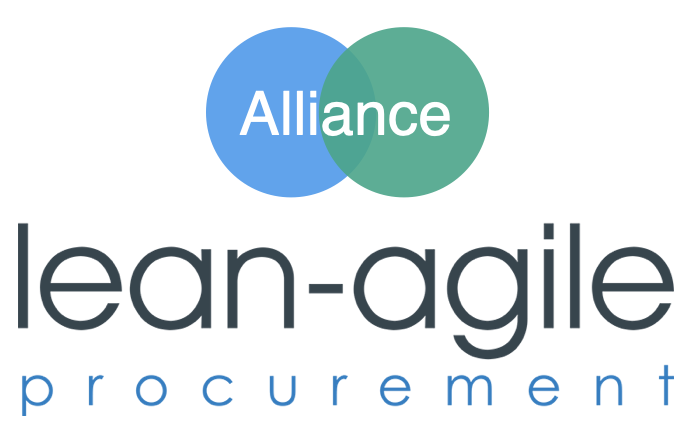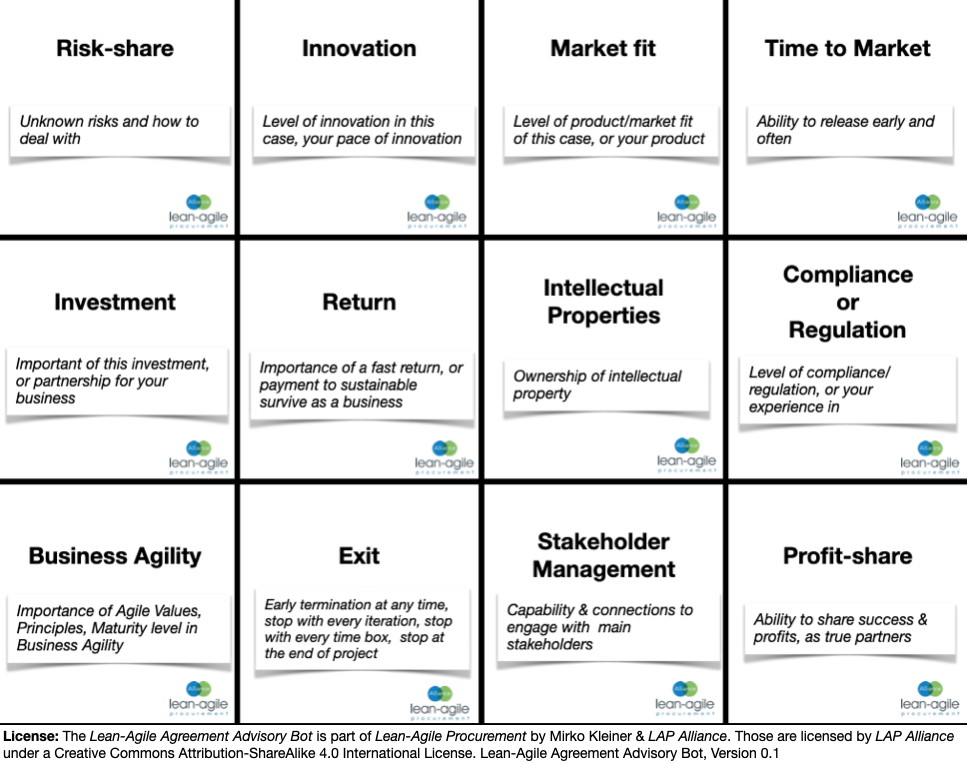There are NO Agile Contracts!
Similar as there are no unicorns, even no cats with one :-), there also don’t exist agile contracts!-In my opinion we not just need get rid off this term, we also need to rethink how we come to an agreement.
In this blog post you’ll find out why and learn alternatives to overcome the dilemma of Business Agility and handling the legal aspects with your partners.
Similar as there are no unicorns, even no cats with one :-), there also don’t exist agile contracts!-In my opinion we not just need get rid off this term, we also need to rethink how we come to an agreement.
In this blog post you’ll find out why and learn alternatives to overcome the dilemma of Business Agility and handling the legal aspects with your partners.
Unfortunately we need to inform you, that there’s been a big misunderstanding the last 15+ years. The agile community has come up with new concepts around contracting, even contractual templates have been developed, etc. However, there is no silver bullet and for sure there are NO agile contracts!
Why an Agile Contract doesn’t make any sense?
Have you ever thought about the words „Agile Contract“?-„Agile“ (1) stands for values & principles where we act on the same eye level, looking for people, partners, etc, that are able to respond to change more effective together. While „Contract“ has the word „Contra“ in it, which means against or opposite (2).
“Contract is legally an agreement with specific terms between two or more persons or entities in which there is a promise to do something in return for a valuable benefit known as consideration.”
However „agreement“ is part of the definition, in practice it’s much more of the „against or opposite“ behaviors we recognize. Borders of responsibilities are usually cemented in a contract, so that lawyers increase the chances to win at court if something goes really wrong. In fact a contract is more of saving the buyer’s, or vendor’s interest and tries to reduce it’s risks as much as possible. Btw. There’s nothing wrong about that. However, it’s more of the way it’s getting approached. We’ve somehow lost the aspect of „agreement“. I often experience „take it or leave it“-situations, predefined contracts with penalties, etc. in place where there’s no opportunity to improve it together. Doing so we are not applying any agile values & principles to the process of agreeing even though we refer to it often in the contract. How weird is that?
Even if we’ve put good practices such as „money for nothing“, „changes for free“, a more outcome based focus of the contract, etc. it’s still missing the collaboration aspect of an agreement!-Even worse than that put people who aren’t so deep in agile think by such good practices of a silver bullet and put everything in one new big template and call it an agile contract. Or others call a true agile contract has been based on time and materials. All of those are wrong!
The reason why nobody has found the silver bullet yet is there is none!-It depends on the context, the parties involved, the people and their values/cultures, etc.
So, what’s the alternative?-Goodbye Agile Contract, welcome Lean-Agile Agreement
First of all we’d like to change the term „Contract“ into „Agreement“, because it has „agree“ in it and if we’re believing in true agile values such as trust, honesty, etc. we’d also respect a co-creation of the legal agreement. In our cases with Lean-Agile Procurement we’re applying this principle of co-creating very successfully which leads to more honest conversations between all parties about each others concerns, risks, cost-drivers, etc. A CEO of one of the vendor’s recently even said, this is the fairest agreement we’ve ever signed!
“This is the fairest agreement we’ve ever signed!”
We also need to understand, that there are no agreement, that are evil. We should more think of all the different agreement types as of a continuum, or different meals we can choose from depending on our context. Find some listed the following.
Time & Materials is one of those agreement types, that could make sense in certain contexts. But and there is a big BUT, we need to have a honest conversation about the risks we’re transferring to the buyer side and how to handle those. Of course there are quite radical agreement types, such as e.g. „Outcome-based with profit sharing“, service subscription, etc. that might even change the business model. Do you remember, that e.g. Rolls Royce - one of the biggest suppliers of aircraft engines and services - switched to a service subscription where the airlines „just“ pay per flying hour?-But that’s another story.
On the continuum you’ll not find fake agile agreements such as e.g. Story point based agreement or Sprint-based agreement. Just think about who is in control of story point estimation and you’ll realize that this makes no sense. If any kind of estimation point makes sense it would be Business Value Point estimation. Or why should we create more legally overhead at the end of a sprint e.g. every week as an iteration is more an opportunity to test our assumptions and learn together.
As we’re also not looking for 100-pages legal documents we also should consider to keep an agile agreement as lean as possible. That’s why we’d like to introduce to the community a new term „Lean-Agile Agreement“!
Goodbye Negotiation, welcome Commercial Conversation
As mentioned above a key aspect of a Lean-Agile Agreement is collaboration between the parties and taking this to an even further level of co-creation. On the other hand we need to say goodby to endless negotiations, approvals, etc. Here Lean-Agile Procurement as an approach could be beneficial. We often spend less than 20min for finalizing the agreement with a 3rd party thanks to the fact, that we have all the right people in one room simultaneously.
We’d like to have honest commercial conversations where we act on the same eight level and improving of the Lean-Agile Agreement together is not an exception but more of the new normal. To foster collaboration and this commercial conversation we’ve asked ourselves what are the key aspects that drives, or blocks an agreement. Find a collection of topics as cards for self-printing the following.
Get a joint understanding what each of the topics means to you, what other topics might be important to you and try to prioritize the LAP Agreement Cards together to get an understanding about each others values, concerns, etc. Btw. have I mentioned that „negotiation“ is a term from the past too :-)?-We’re also looking to improve this wording into „Commercial Conversation“.
Our key take-away
Agile Contract is an unfortunate term because it consists of „Contra“, that doesn’t fit really with agile values & principles.
We therefor should start using Lean-Agile Agreement, that pushes the principle of lean, joint agreement, co-creation more explicit.
There are no agreement types, that are evil. We should more think of all the different agreement types as of a continuum to choose from depending on our context, people, culture, etc. The LAP cards are supporting us here.
The LAP Agreement Cards also support us in the commercial conversation based on agile values & principles instead of traditional negotiations.
Find out in our next blog post why we need a major upgrade of the agilemanifesto.org
Author
Sources:
Header image: https://cutecatsinhats.com/unicorn-cat-hat/
1) agile https://agilemanifesto.org
2) https://dictionary.cambridge.org/de/worterbuch/englisch/contra
2) Legal dictionary https://legal-dictionary.thefreedictionary.com/contract



